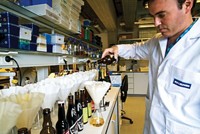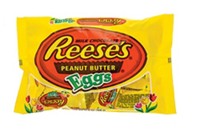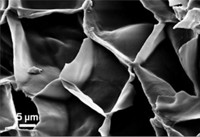Advertisement
Grab your lab coat. Let's get started
Welcome!
Welcome!
Create an account below to get 6 C&EN articles per month, receive newsletters and more - all free.
It seems this is your first time logging in online. Please enter the following information to continue.
As an ACS member you automatically get access to this site. All we need is few more details to create your reading experience.
Not you? Sign in with a different account.
Not you? Sign in with a different account.
ERROR 1
ERROR 1
ERROR 2
ERROR 2
ERROR 2
ERROR 2
ERROR 2
Password and Confirm password must match.
If you have an ACS member number, please enter it here so we can link this account to your membership. (optional)
ERROR 2
ACS values your privacy. By submitting your information, you are gaining access to C&EN and subscribing to our weekly newsletter. We use the information you provide to make your reading experience better, and we will never sell your data to third party members.
Food Science
Newscripts
Tomatoes and avocados: Science in service of perfect guacamole
by Jessica Marshall
June 6, 2020
| A version of this story appeared in
Volume 98, Issue 22
Room-temperature tomato vs. cold tomato

Other than how to pronounce the word, perhaps the biggest tomato debate is over their storage. Should they absolutely never be kept in the refrigerator (but rather on the counter or other room temperature spot), or should everybody chill because the fridge is fine? What better way to settle the question than an exhaustive chemical analysis and a trained panel of sensory analysts to assess their flavor and smell?
Researchers at the University of Göttingen studied ripe-picked tomatoes treated to mimic their usual path to consumers. They sat in cold storage at 12.5 °C for a day and at room temperature for 2 days. The difference in the tomatoes’ treatment began at what would have been the point of purchase, when some were put in the refrigerator and some were kept at room temperature. After 4 days, researchers measured the tomatoes’ sugars, acidity, aroma compounds, and more. They also presented the tomatoes to individuals trained in assessing flavor and aroma for their judgment (Front. Plant Sci. 2020, DOI: 10.3389/fpls.2020.00472). The verdict: no discernible difference.
It is important, though, to bring refrigerated tomatoes to room temperature before eating for their best taste, notes study author Larissa Kanski. “When you eat them cold, there is less aroma,” and the variety of tomato mattered more than storage temperature, she tells Newscripts. Developing tomato varieties with better flavors would be a more fruitful strategy for attaining that elusive product we all yearn for: a delicious store-bought tomato.
Those who have closely monitored C&EN’s tomato coverage over the years may note that this finding contrasts with research reported in 2016, showing that cold storage of tomatoes reduced expression of genes associated with flavor development (Proc. Natl. Acad. Sci. USA 2016, DOI:10.1073/pnas.1613910113). That study found that after 7 days of cold storage, tomatoes had significantly lower levels of flavor-related volatiles, and taste testers rated them as less delicious than those not chilled. The flavor compound changes were not yet present in the study at 1 and 3 days, however. So perhaps the take-home here is: it’s fine to cool these fruits, but don’t wait too long to dig into your refrigerated tomatoes.
Ripe avocados resonate
Along with flavorful tomatoes, the centerpiece of guacamole is the sublime avocado. Cutting one open to reveal the perfect creamy texture and uniform green that marks the moment of perfect ripeness is a tiny triumph that’s tough to achieve. Thankfully, researchers now report a way to assess an avocado’s place on the path to such perfection without the damaging punctures required in today’s supply chain.

Newscripts was surprised to learn that as many as 30% of avocados are lost to damage during the tests that grade avocados on processing lines. The fruit’s firmness is determined via puncture with a device called a penetrometer.
But the new method builds on an approach called laser Doppler vibrometry, used for checking the uniformity of car parts, which determines the resonant frequency of a vibrating object using the Doppler shift that the vibration produces. To apply this to avocados, a team at Cranfield University set an avocado on its side on a couple of rollers, then gently whacked it with a little nylon ball hammer, detecting the resonance with a laser. They found that they could reliably connect stages of ripeness to the signal detected via their instrument (Biosyst. Eng. 2020, DOI: 10.1016/j.biosystemseng.2020.04.001).
It’s akin to flicking the avocado with your finger and judging the tone of the resulting thwack to assess ripeness, says study author Sandra Landahl. While your finger is a much cheaper way to look for ripeness at home, the team suggests that their approach could be useful for sorting avocados on a larger scale, deciding which should be tossed, which should be held a little longer, and which are ready for sale, waiting to take their rightful place in the world’s best dip.
So get some perfectly resonating avocados, and don’t chill your tomatoes for more than 4 days. That’s science’s recipe for the foundation of perfect guacamole.
Please send comments and suggestions to newscripts@acs.org.





Join the conversation
Contact the reporter
Submit a Letter to the Editor for publication
Engage with us on Twitter